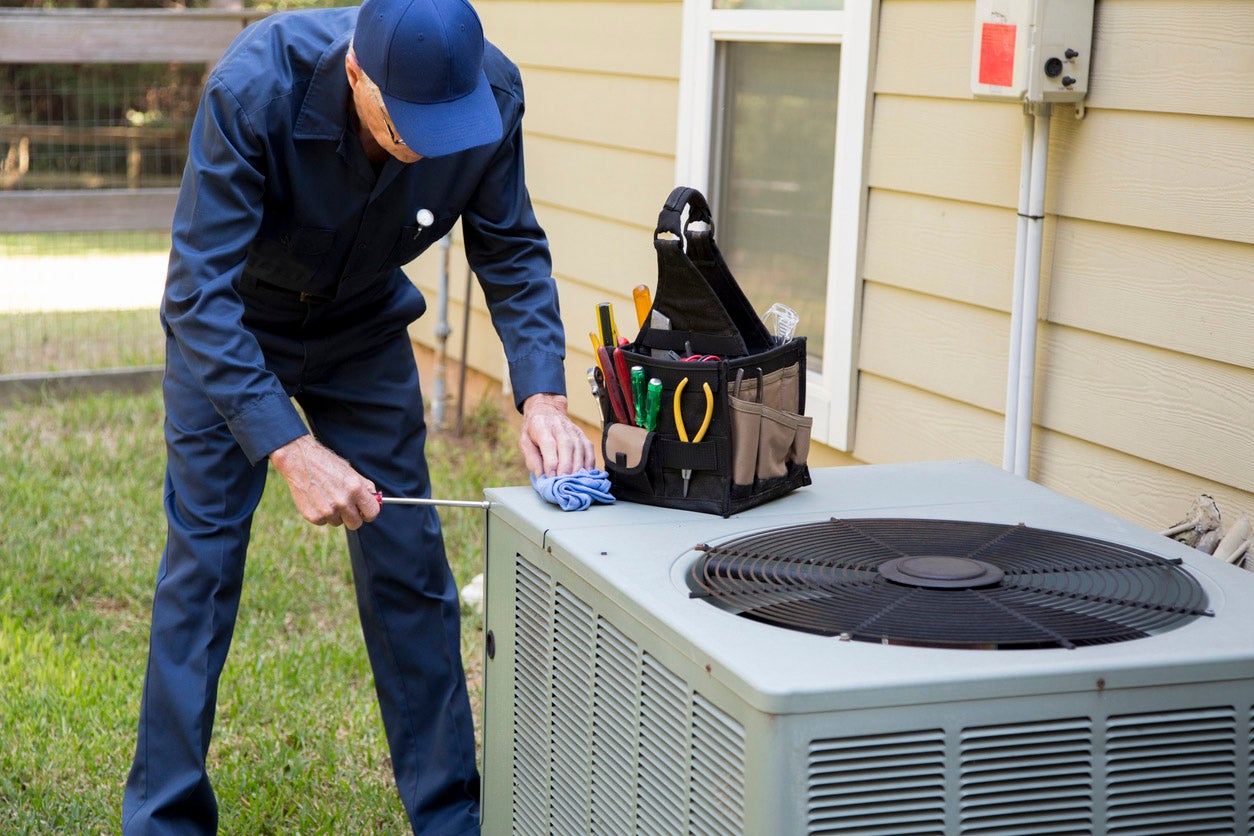

Articles
Why Is My AC Unit Fan Not Spinning
Modified: October 20, 2024
Discover common reasons why your AC unit fan is not spinning and learn helpful tips and articles to troubleshoot the issue, ensuring your home stays cool and comfortable.
(Many of the links in this article redirect to a specific reviewed product. Your purchase of these products through affiliate links helps to generate commission for Storables.com, at no extra cost. Learn more)
Introduction
Having a malfunctioning AC unit can be frustrating, especially when the fan is not spinning. The fan plays a crucial role in circulating cool air throughout your home, and when it fails to function properly, it can lead to discomfort and a less efficient cooling system. Understanding the common reasons for an AC fan not spinning and how to troubleshoot the issue can help you get your cooling system back up and running smoothly.
There are several potential causes for an AC fan not spinning, ranging from minor issues that can be fixed easily to more complex problems that may require professional assistance. By identifying the root cause of the problem, you can take the necessary steps to address it and restore the functionality of your AC unit.
In this article, we will explore the common reasons for an AC fan not spinning and provide troubleshooting steps to help you resolve the issue.
Key Takeaways:
- Regular maintenance and professional inspections can help prevent common issues like a blown capacitor or faulty fan motor, ensuring your AC unit’s fan spins efficiently and keeps your home cool.
- If your AC unit’s fan isn’t spinning, check the power supply, inspect the capacitor and fan motor, test the thermostat, and clean or replace the fan blades. Seek professional help if needed to ensure optimal performance.
Read more: Why Is My AC Fan Not Turning On
Common Reasons for AC Fan Not Spinning
When your AC fan fails to spin, it indicates there is an underlying problem that needs to be addressed. Here are some common reasons why your AC fan may not be spinning:
- Blown Capacitor: The capacitor is responsible for providing an electrical boost to start the fan motor. If the capacitor is faulty or blown, the fan may not receive the necessary power to spin.
- Faulty Fan Motor: A malfunctioning fan motor can prevent the fan from spinning. This can be caused by worn-out bearings, a burnt-out motor, or a loose connection.
- Malfunctioning Thermostat: The thermostat controls when the fan should run. If the thermostat is not functioning correctly, it may not be sending the signal for the fan to start spinning.
- Blockage or Damage in the Fan Blades: Accumulated dirt, debris, or physical damage to the fan blades can hinder their movement. This can prevent the fan from spinning freely or cause it to become imbalanced.
- Electrical Issues: Problems with the electrical wiring or connections in the AC unit can disrupt the power supply to the fan motor, resulting in the fan not spinning.
Identifying the specific cause of the fan not spinning is crucial to resolving the issue. In the next section, we will discuss troubleshooting steps that can help pinpoint and resolve the problem.
Blown Capacitor
A blown capacitor is a common cause of an AC fan not spinning. The capacitor is a small cylindrical device located inside the AC unit that stores and releases electrical energy to start the fan motor. If the capacitor becomes faulty or blown, it may not be able to provide the necessary electrical boost to kickstart the fan motor.
You can easily identify a blown capacitor by visually inspecting it. A blown capacitor often has a bulging or leaking appearance, indicating that it is no longer functional. In some cases, the capacitor may also emit a burning smell.
To address a blown capacitor, you will need to replace it. Start by turning off the power supply to the AC unit to ensure your safety. Then, locate the capacitor inside the unit, which is usually near the fan motor. Take note of the capacitor’s specifications (voltage and microfarads) to purchase a compatible replacement.
Once you have the new capacitor, carefully disconnect the wires connected to the blown capacitor. Make sure to take note of the wire configuration to reconnect them correctly later. Remove the blown capacitor from its mounting bracket, and replace it with the new one, securing it in place.
Next, reconnect the wires to the corresponding terminals on the new capacitor, ensuring the correct polarity. Double-check all connections to ensure they are tight and secure. Finally, turn on the power supply and test the AC unit to see if the fan starts spinning. If the fan operates smoothly, your issue may be resolved.
If the fan still does not spin after replacing the capacitor, it is recommended to consult a professional HVAC technician to further diagnose and troubleshoot the problem.
Faulty Fan Motor
A faulty fan motor is another common reason for an AC fan not spinning. The fan motor is responsible for generating the rotational motion that spins the fan blades and circulates the air. If the fan motor is worn out, burnt out, or experiencing a loose connection, it may fail to operate, resulting in a non-spinning fan.
To determine if the issue lies with the fan motor, you can perform a visual inspection. Start by turning off the power supply to the AC unit for safety. Locate the fan motor, which is typically located near the fan blades or within the main unit. Carefully examine the motor for any visible signs of damage, such as corrosion, burnt wires, or excessive dust accumulation.
If you notice any signs of damage or if the fan motor appears to be physically faulty, it is likely that the motor needs to be replaced. Replacing the fan motor is a more complex task and may require the expertise of an HVAC technician.
Before replacing the motor, be sure to identify the correct replacement part by noting down the motor’s specifications, such as voltage, power rating, and rotation direction. Once you have the replacement motor, follow the manufacturer’s instructions or consult a professional technician to ensure a proper installation.
If you are not comfortable or familiar with electrical work, it is strongly recommended to seek professional help to avoid any potential hazards or further damage to the AC unit.
Addressing a faulty fan motor promptly is essential to restore the functionality of your AC unit. A trained technician can diagnose the issue accurately and provide the necessary repairs or replacement to get your fan spinning again.
Malfunctioning Thermostat
A malfunctioning thermostat can also be a culprit behind an AC fan not spinning. The thermostat is responsible for detecting the temperature in your home and signaling the AC unit to turn on or off, including activating the fan. If the thermostat is not functioning correctly, it may fail to send the signal to start the fan motor.
To troubleshoot a malfunctioning thermostat, start by checking the settings. Ensure that the thermostat is set to the correct cooling mode and that the temperature is set lower than the current room temperature. Sometimes, a simple adjustment or recalibration of the thermostat settings can solve the problem.
If adjusting the settings does not resolve the issue, you can further troubleshoot by checking the power supply to the thermostat. Turn off the power to the HVAC system, locate the circuit breaker or fuse that controls the thermostat, and check if it has tripped or blown. Reset the breaker or replace the fuse if necessary.
In some cases, the problem may lie within the thermostat itself. If you suspect this to be the case, you can try removing the thermostat cover and inspecting for any loose wires or obvious damage. Ensure that all connections are secure and properly connected.
If you have access to a multimeter, you can also perform a voltage check to determine if the thermostat is receiving power. Follow the manufacturer’s instructions or consult a professional technician to safely perform this test.
If you’ve exhausted these troubleshooting steps and the thermostat still appears to be malfunctioning, it is advisable to contact a professional HVAC technician. They will have the expertise and tools to diagnose and repair or replace the thermostat as needed.
Addressing a malfunctioning thermostat promptly is essential for maintaining a comfortable and energy-efficient home environment. A professional technician can help ensure that your thermostat is working correctly, allowing the AC fan to spin and distribute cool air effectively.
Read more: Why Is My AC Unit Not Turning On
Blockage or Damage in the Fan Blades
Another common reason for an AC fan not spinning is a blockage or damage in the fan blades. Over time, dirt, debris, and even small objects can accumulate in or around the fan blades, obstructing their movement. Additionally, physical damage to the blades can affect their ability to rotate freely.
To address this issue, start by turning off the power to the AC unit for safety. You can then visually inspect the fan blades for any visible blockages or signs of damage. Gently remove any debris or obstructions that you can safely reach, such as leaves, twigs, or dust buildup.
If the blades appear to be physically damaged, such as bending, chipping, or warping, it may be necessary to replace them. Contact a professional HVAC technician to assess the extent of the damage and provide proper solutions.
In some cases, you may also need to clean the fan blades more thoroughly. Remove the protective cover or grille around the fan blades, if applicable, to gain better access. Use a soft brush or cloth to gently clean the blades, removing any dirt or debris. Avoid using excessive force or harsh chemicals, as this could cause further damage.
Once the blades are cleaned and free from obstructions, test the AC unit to see if the fan starts spinning. If the blades were indeed the cause of the issue, they should now be able to rotate freely, allowing for proper airflow.
Regular maintenance, such as cleaning the fan blades and ensuring they remain free from blockages, can prevent this issue from occurring in the future. It is recommended to schedule annual maintenance check-ups with an HVAC professional to keep your AC unit in optimal condition.
If the fan still does not spin after clearing any blockages or damage, other underlying issues may be the cause. In such cases, it is best to contact a professional technician for further diagnosis and repair.
Electrical Issues
Electrical issues can also be a common factor contributing to an AC fan not spinning. Problems with the electrical wiring or connections in the AC unit can disrupt the power supply to the fan motor, preventing it from operating properly.
Here are some electrical issues that may cause the fan not to spin:
1. Faulty Wiring: Loose or damaged wiring can interrupt the flow of electricity to the fan motor. Over time, vibrations from the AC unit or exposure to environmental factors can cause wires to become loose or worn out.
2. Tripped Circuit Breaker: A tripped circuit breaker can cut off the power supply to the AC unit, including the fan motor. This can happen due to a power surge, overheating, or an electrical overload.
3. Faulty Fan Relay: The fan relay is responsible for controlling the power supply to the fan motor. If the relay becomes faulty or stuck in an off position, it can prevent the fan from spinning.
4. Blown Fuse: Similar to a tripped circuit breaker, a blown fuse can interrupt the power supply to the AC unit, including the fan motor. Fuses can blow due to electrical surges or overloads.
5. Loose Connections: Loose connections can occur anywhere in the electrical system of the AC unit, such as at the capacitor, fan motor, thermostat, or control board. These loose connections can disrupt the flow of electricity to the fan motor.
To address electrical issues, it is recommended to turn off the power supply to the AC unit before attempting any inspections or repairs. You can visually inspect the wiring for any loose or damaged connections, tightening them or replacing them if necessary.
If you suspect a tripped circuit breaker or blown fuse, locate the electrical panel in your home and check for any tripped breakers or blown fuses related to the AC unit. Reset or replace them accordingly.
If you are not comfortable working with electrical components or if the issue persists after troubleshooting, it is advisable to contact a qualified HVAC technician. They have the knowledge and expertise to safely diagnose and resolve electrical issues in your AC unit.
Remember, when dealing with electrical issues, safety should be the top priority. Take precautions and seek professional help when needed to avoid any potential hazards or further damage to the AC unit.
Troubleshooting Steps for AC Fan Not Spinning
If your AC fan is not spinning, there are several troubleshooting steps you can take to try and resolve the issue. By going through these steps systematically, you can identify the underlying problem and potentially fix it yourself, saving time and money. Here are some troubleshooting steps to follow:
- Check the Power Supply: Ensure that the AC unit is receiving power. Check the electrical panel to ensure that the circuit breaker or fuse related to the AC unit is not tripped or blown. If it is, reset the breaker or replace the fuse.
- Inspect the Capacitor: Examine the capacitor, located inside the AC unit, for any signs of damage or bulging. A blown capacitor can prevent the fan motor from receiving the necessary electrical boost. If the capacitor appears to be faulty, replace it with a compatible one.
- Examine the Fan Motor: Visually inspect the fan motor for any visible damage or loose connections. Look for signs of wear, burnt wires, or excessive dust accumulation. If the fan motor is damaged or worn out, it may need to be replaced.
- Test the Thermostat: Check the thermostat settings and ensure it is properly configured for cooling. Adjust the temperature to a lower setting than the current room temperature. If the thermostat is not sending the signal to start the fan, it may need recalibration or replacement.
- Clean or Replace the Fan Blades: Remove any blockages or debris from the fan blades. Use a soft brush or cloth to clean the blades gently. If the blades are physically damaged or bent, consider replacing them. This can help prevent obstructions and ensure smooth rotation.
- Check for Electrical Problems: Inspect the AC unit’s electrical wiring and connections for any loose or damaged components. Tighten connections as necessary and replace any faulty wiring or components. Electrical issues can disrupt the power supply to the fan motor.
While these troubleshooting steps can help you address common causes of an AC fan not spinning, it’s important to remember that HVAC systems can be complex. If you are unsure or uncomfortable performing any of these steps, it is best to contact a professional HVAC technician. They have the expertise and tools to diagnose and resolve the issue effectively.
Regular maintenance of your AC unit, such as cleaning the fan blades, checking electrical connections, and scheduling professional inspections, can help prevent future issues with the fan not spinning. By taking proper care of your AC system, you can ensure optimal performance and a comfortable indoor environment.
Check if the fan motor is receiving power. If not, it could be a faulty capacitor or a wiring issue. If it is receiving power, the motor may be faulty and need to be replaced.
Check the Power Supply
When troubleshooting an AC fan not spinning, the first step is to check the power supply to the unit. Ensuring that the AC unit is receiving a proper power supply is essential for the fan to operate correctly. Here’s how you can check the power supply:
- Turn off the Power: Before inspecting the power supply, always turn off the power to the AC unit. This is crucial for your safety and to avoid any electrical accidents.
- Locate the Electrical Panel: The electrical panel, also known as the breaker box or fuse box, is usually located in a utility room, basement, or garage. Open the panel to access the circuit breakers or fuses.
- Look for Tripped Breakers: Examine the circuit breakers in the panel and check if any of them have tripped. A tripped breaker will be in the middle position or slightly pushed off. Reset the breakers by switching them fully off and then back on.
- Inspect Blown Fuses: If your AC unit operates on fuses rather than circuit breakers, inspect the fuses related to the AC unit. Look for any blown fuses, indicated by a broken metal strip inside the fuse. If you find a blown fuse, replace it with a new one of the same amperage.
- Test the Power: After resetting the breakers or replacing blown fuses, turn on the power supply for the AC unit. Use the thermostat to activate the cooling mode and listen for any sounds coming from the unit. Verify if the fan starts spinning. If the fan starts spinning and the AC unit functions properly, the power supply issue may be resolved.
If the fan still does not spin after checking the power supply, it may be necessary to explore other possible causes, such as a blown capacitor, faulty fan motor, or electrical issues within the unit. In such cases, it is recommended to contact a professional HVAC technician for further diagnosis and repair.
Remember, dealing with electrical components requires caution and expertise. If you are not comfortable working with electricity or are unsure about the troubleshooting steps, it’s best to seek professional assistance.
Read more: Why Does My AC Smell Bad
Inspect the Capacitor
When troubleshooting an AC fan not spinning, one of the common culprits is a faulty capacitor. The capacitor plays a crucial role in providing the necessary electrical boost to start the fan motor. If the capacitor is blown or faulty, it can prevent the fan from spinning. Here’s how you can inspect the capacitor:
- Turn off the Power: Before inspecting the capacitor, make sure to turn off the power supply to the AC unit. Shut off the circuit breaker or remove the fuse for added safety.
- Locate the Capacitor: The capacitor is typically located inside the AC unit near the fan motor. It is a small cylindrical-shaped device with wires attached to it. Take note of its location and ensure you can access it easily.
- Visually Inspect the Capacitor: Carefully examine the capacitor for any visible signs of damage. Look for swelling, bulging, or leakage from the top or bottom of the capacitor. These are indications that the capacitor may be blown or faulty.
- Check for Burning Smell: In some cases, a blown capacitor may emit a burning smell. If you detect any unusual odors coming from the capacitor, it is likely that it needs to be replaced.
- Test the Capacitor: If you have access to a multimeter, you can perform a capacitance test to check the functionality of the capacitor. Follow the manufacturer’s instructions or consult a professional technician for proper testing procedures.
- Replace the Capacitor: If you determine that the capacitor is blown or faulty, it needs to be replaced. Note down the capacitor’s specifications, such as voltage and microfarads (µF), to purchase a compatible replacement. Make sure to turn off the power supply before removing and replacing the capacitor.
Replacing a capacitor involves disconnecting the wires, removing the blown capacitor, and installing the new one in its place. It is recommended to consult a professional HVAC technician if you are unsure or unfamiliar with electrical work, as working with capacitors can be dangerous if not done properly.
Remember, capacitors store electrical energy even when the power is turned off, so use caution when handling them. If you are not comfortable or confident in inspecting or replacing the capacitor yourself, it is best to seek professional assistance.
Examine the Fan Motor
When troubleshooting an AC fan not spinning, it is important to examine the fan motor. The fan motor is responsible for generating the rotational motion that spins the fan blades. If the fan motor is faulty or experiencing connection issues, it can prevent the fan from spinning. Here’s how you can examine the fan motor:
- Turn off the Power: Before examining the fan motor, ensure that the power supply to the AC unit is turned off. This step is crucial for your safety and to prevent any electrical accidents.
- Locate the Fan Motor: Depending on your AC unit, the fan motor is typically housed inside the outdoor condenser unit or the indoor air handler unit. Familiarize yourself with the unit and locate the fan motor.
- Visual Inspection: Carefully inspect the fan motor for any visible damage. Look for signs of wear and tear, burnt wires, or excessive dust accumulation. Damaged or worn-out fan motors may need to be replaced.
- Check for Loose Connections: Examine the wiring connections to the fan motor. Ensure that all connections are secure and properly attached. Loose or disconnected wires can interrupt the flow of electricity, preventing the fan motor from operating.
- Test the Motor: If the visual inspection does not reveal any obvious issues, you may need to test the motor’s functionality. This will require using a multimeter or a voltage tester. Follow the manufacturer’s instructions or consult a professional technician for proper testing procedures.
- Consult a Professional: If you are unsure about the fan motor’s condition or experience difficulties during the inspection, it is best to consult a professional HVAC technician. They have the expertise and tools necessary to diagnose and repair issues with the fan motor.
Dealing with electrical components can be hazardous, so if you’re not comfortable or confident in examining the fan motor, it’s best to seek professional assistance. A trained technician can accurately diagnose the issue and recommend the appropriate steps to repair or replace the fan motor if necessary.
Remember, safety should always be a priority when working with electrical components. Ensure that the power supply is turned off before conducting any inspection or repairs.
Test the Thermostat
When troubleshooting an AC fan that is not spinning, it’s important to check the functionality of the thermostat. The thermostat plays a crucial role in regulating the cooling system and signaling when the fan should run. If the thermostat is not functioning correctly, it may fail to send the signal to start the fan motor. Here’s how you can test the thermostat:
- Check the Thermostat Settings: Ensure that the thermostat is set to the cooling mode and that the temperature is set lower than the current room temperature. Sometimes, incorrect settings can prevent the fan from running.
- Calibrate the Thermostat: The thermostat may need recalibration if it is not accurately detecting the room temperature. Follow the manufacturer’s instructions or consult the thermostat manual for proper calibration steps. Recalibrating the thermostat can help it accurately determine when to activate the fan.
- Inspect for Obvious Issues: Carefully examine the thermostat for any visible issues such as loose wiring or physical damage. Ensure that all connections are secure and that there is no visible damage to the thermostat itself. Loose connections or physical damage can prevent the thermostat from functioning correctly.
- Test the Thermostat: You can perform a simple test to check the functionality of the thermostat. Lower the temperature setting on the thermostat below the current room temperature and wait for a few minutes. If the fan does not start spinning, you may need to further troubleshoot or replace the thermostat.
- Consult a Professional: If the thermostat does not seem to be functioning correctly or you have difficulty testing it, it is best to consult a professional HVAC technician. They have the expertise and tools to accurately diagnose thermostat issues and can recommend repairs or replacement if necessary.
Remember, thermostats can be complex devices, and tampering with them without proper knowledge can cause further issues. If you are unsure or uncomfortable with testing the thermostat, it is best to seek professional assistance.
Maintaining a correctly functioning thermostat is crucial for the overall performance of your AC system. Regular maintenance and professional inspections can help ensure that the thermostat is working as intended, allowing the fan to spin and distribute cool air effectively.
Clean or Replace the Fan Blades
One of the common reasons for an AC fan not spinning is blockage or damage to the fan blades. When dirt, debris, or physical damage obstructs the blades, they may not be able to rotate freely, preventing the fan from spinning. Here’s how you can clean or replace the fan blades:
- Turn off the Power: Before working on the fan blades, ensure that the power supply to the AC unit is turned off. This is crucial for your safety and to avoid any accidents.
- Remove Obstructions: Inspect the fan blades visually and remove any visible blockages or debris. Use a soft brush or cloth to gently clean the blades, ensuring that there is no accumulation of dirt or debris that could impede their movement.
- Inspect for Damage: Carefully examine the fan blades for any physical damage, such as bending, chipping, or warping. Damaged blades may not spin properly and could cause further issues if not addressed. If the blades are significantly damaged, they may need to be replaced.
- Replace Damaged Blades: If the fan blades are extensively damaged, it is advisable to replace them. Contact a professional HVAC technician to ensure that you obtain the correct replacement blades for your specific AC unit. They will be able to install the new blades properly.
- Reinstall the Grille or Cover: If you had to remove the protective grille or cover to access the fan blades, make sure to reinstall it securely. This will help protect the fan blades and ensure the proper functioning of the AC unit.
Regular maintenance of the fan blades is crucial to prevent blockages and damage. Cleaning the blades periodically can help maintain their performance and ensure the smooth rotation of the fan. Moreover, addressing any physical damage promptly can prevent future issues.
If you are uncomfortable or unsure about cleaning or replacing the fan blades yourself, it is recommended to contact a professional HVAC technician. They have the expertise and tools to safely handle fan blade maintenance and replacement.
By keeping the fan blades clean and in good condition, you can help maintain optimal airflow and improve the overall efficiency of your AC system.
Read more: Why Is My AC Making A Buzzing Noise
Check for Electrical Problems
When troubleshooting an AC fan not spinning, it’s important to inspect the AC unit for any electrical problems. Electrical issues can disrupt the power supply to the fan motor, preventing it from operating properly. Here’s how you can check for electrical problems:
- Turn off the Power: Before inspecting the electrical components, ensure that the power supply to the AC unit is turned off. This step is crucial for your safety and to prevent any electrical accidents.
- Inspect the Wiring: Carefully examine the electrical wiring within the AC unit for any visible issues. Look for loose connections, frayed wires, or signs of damage. Ensure that all connections are secure and properly attached. Repair or replace any damaged wires as needed.
- Check the Capacitor: The capacitor plays a critical role in providing an electrical boost to start the fan motor. Examine the capacitor for any signs of damage or bulging. A blown capacitor can disrupt the power supply to the fan motor. Replace the capacitor if necessary.
- Inspect the Control Board: The control board regulates the functions and electrical signals within the AC unit. Examine the control board for any burnt components, loose connections, or visible damage. If you notice any issues, it may be necessary to replace or repair the control board.
- Test the Voltage: If you have access to a multimeter, you can test the voltage at various electrical connections within the AC unit. Follow proper safety procedures and consult a professional technician if you are unsure about performing voltage tests. Incorrect handling of electrical components can be dangerous.
- Consult a Professional: If you are not comfortable or experienced in dealing with electrical components, or if you encounter complex electrical issues, it is best to contact a professional HVAC technician. They have the expertise and tools necessary to diagnose and resolve electrical problems safely and effectively.
Electrical components can be hazardous, so if you’re not confident in checking for electrical problems, it’s best to seek professional assistance. A trained technician can accurately diagnose and repair any underlying electrical issues, allowing the fan to spin and the AC unit to operate as intended.
Regular maintenance and professional inspections of your AC unit are recommended to identify and address any electrical problems before they cause significant damage or affect the functionality of the fan.
Conclusion
When your AC unit’s fan is not spinning, it can be a frustrating and inconvenient problem. However, by understanding the common reasons behind this issue and following the appropriate troubleshooting steps, you can often resolve the issue and restore the functionality of your cooling system.
We covered some of the most common reasons for an AC fan not spinning, including a blown capacitor, faulty fan motor, malfunctioning thermostat, blockage or damage in the fan blades, and electrical issues. These issues can range from minor problems that can be resolved with simple fixes to more complex issues that may require professional assistance.
To troubleshoot an AC fan not spinning, you can follow a series of steps:
- Check the power supply to ensure that the AC unit is receiving proper electricity.
- Inspect the capacitor for any signs of damage and replace it if necessary.
- Examine the fan motor for any visible damage or loose connections.
- Test the thermostat to ensure it is functioning correctly and sending the signal to start the fan.
- Clean or replace the fan blades to ensure they are not obstructed or damaged.
- Check for any electrical problems, such as faulty wiring or connections.
It’s important to keep up with regular maintenance of your AC unit, cleaning and replacing filters as needed, and scheduling professional inspections to identify and address any potential issues before they escalate.
If you’re unsure about any of the troubleshooting steps or if the issue persists after following them, it is always recommended to seek the help of a professional HVAC technician. They have the expertise and knowledge to diagnose and resolve complex problems with your AC unit.
By taking the necessary steps to troubleshoot and address the issue of an AC fan not spinning, you can ensure the efficient and reliable operation of your cooling system, keeping your home comfortable and cool during hot summer months.
Frequently Asked Questions about Why Is My AC Unit Fan Not Spinning
Was this page helpful?
At Storables.com, we guarantee accurate and reliable information. Our content, validated by Expert Board Contributors, is crafted following stringent Editorial Policies. We're committed to providing you with well-researched, expert-backed insights for all your informational needs.
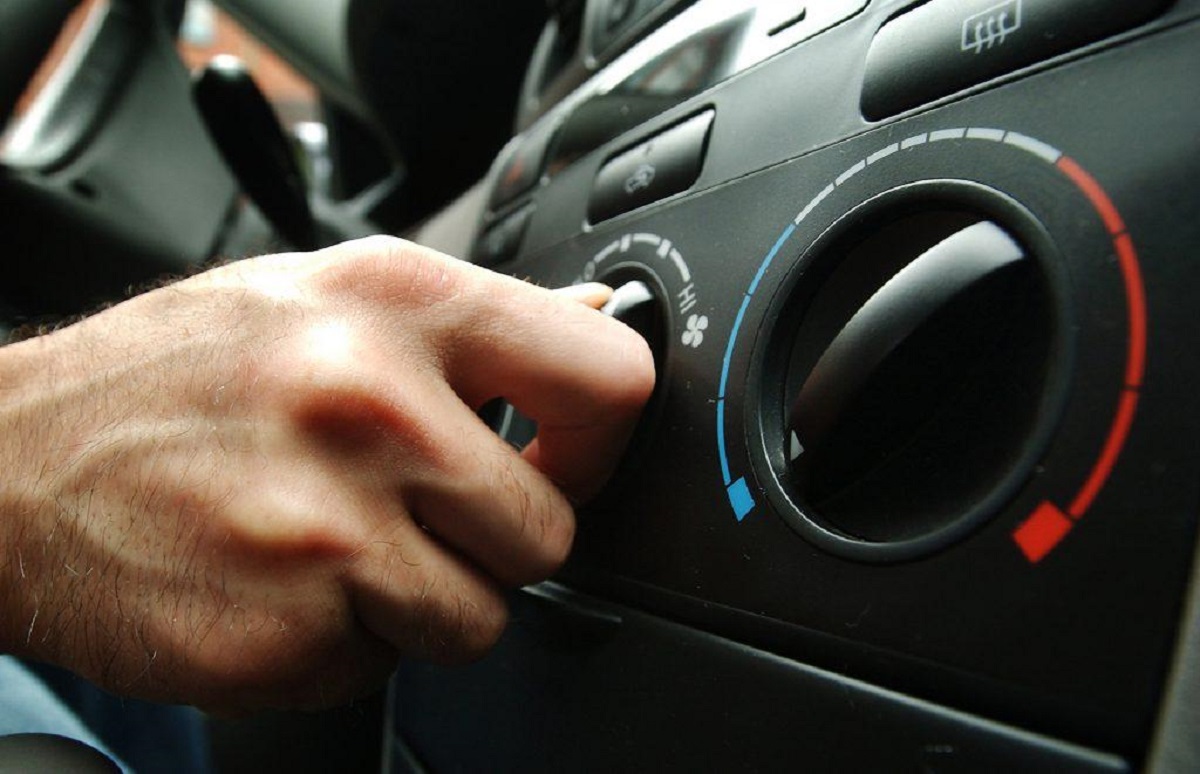
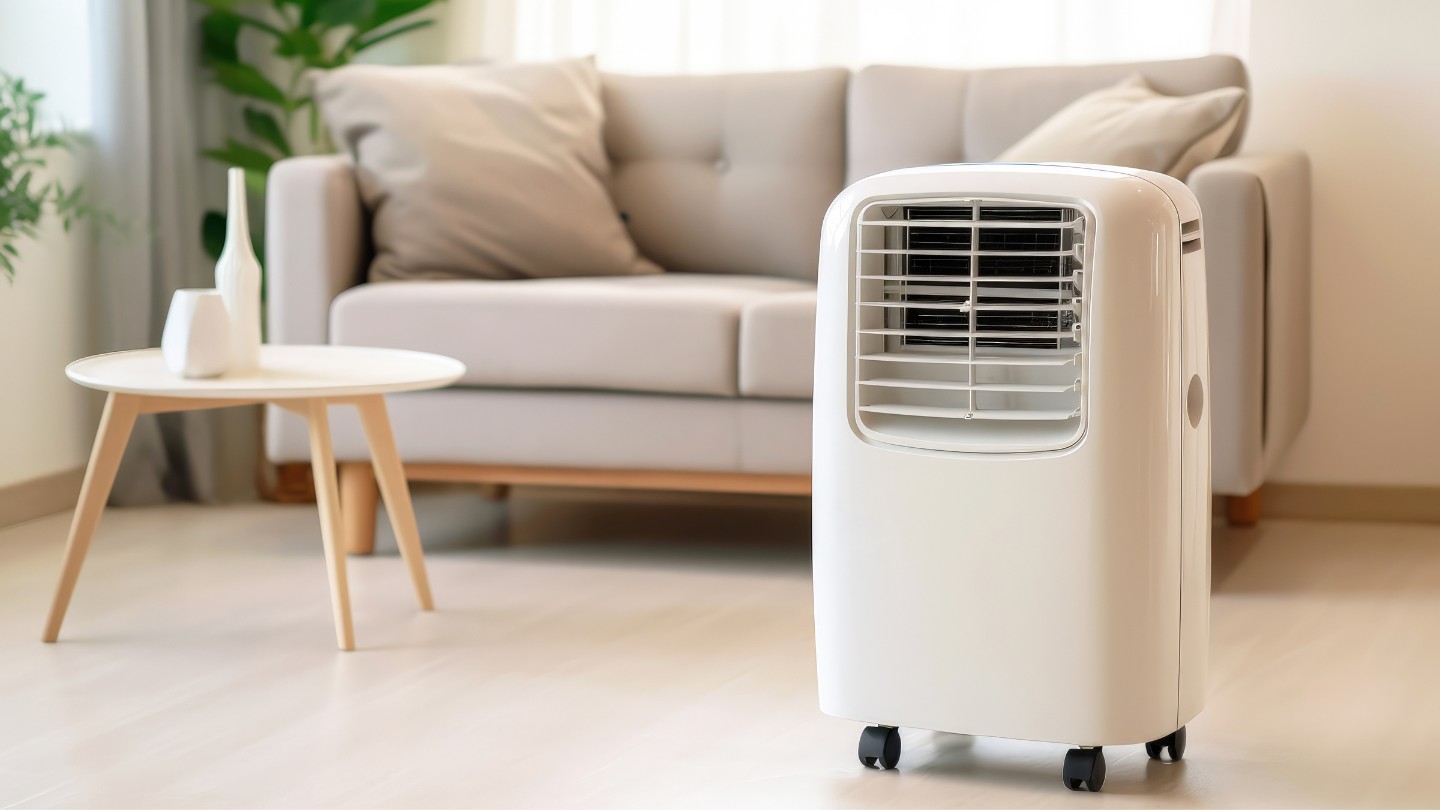
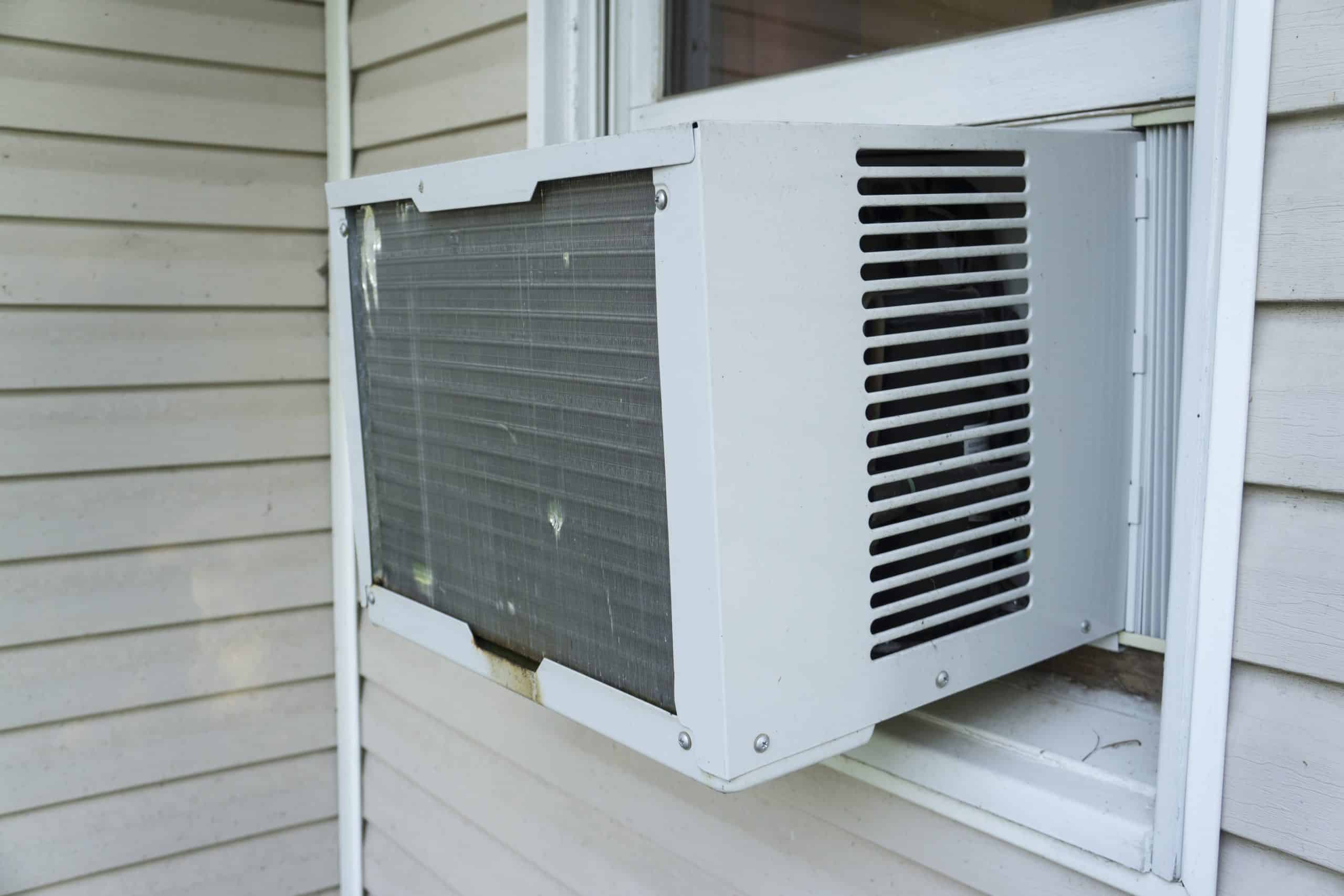
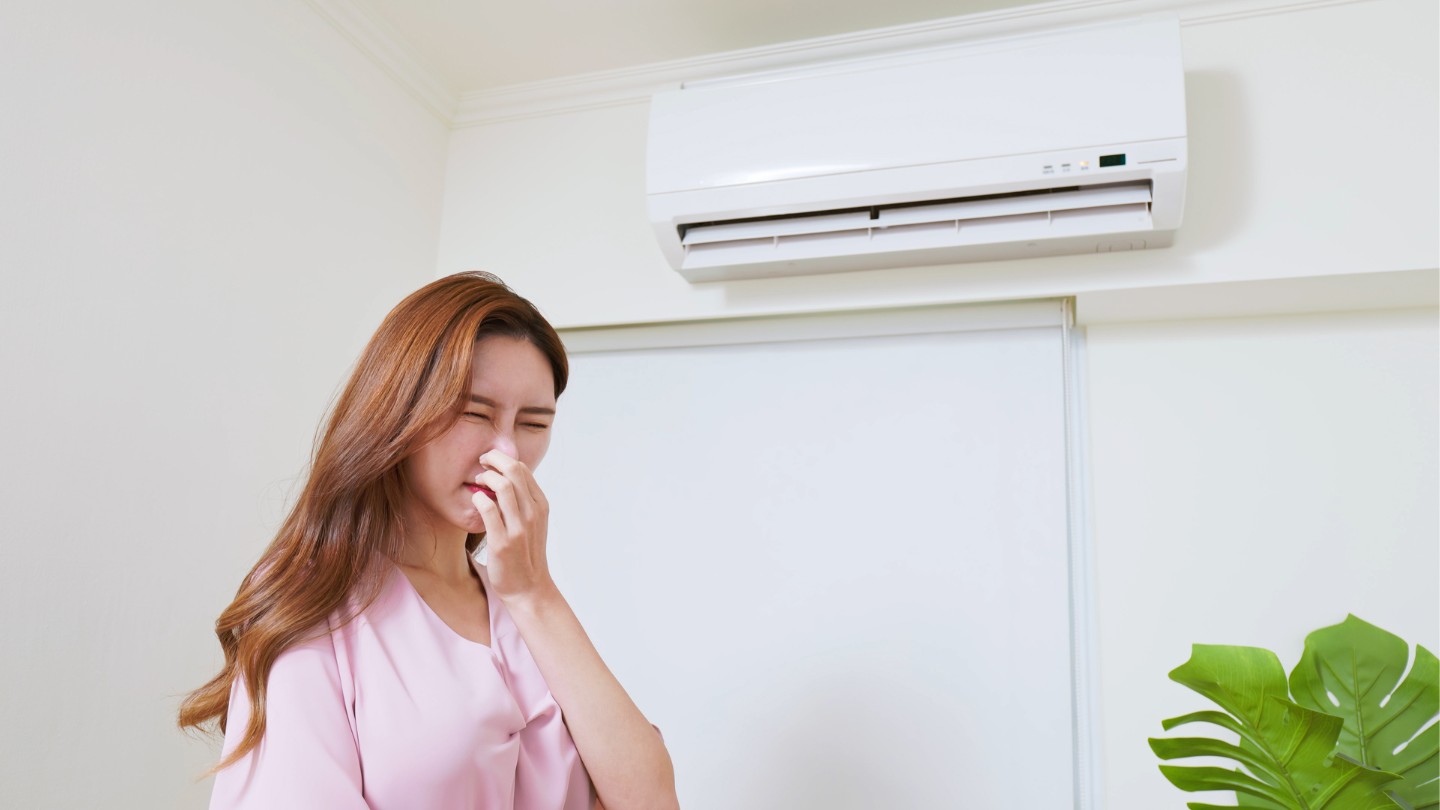

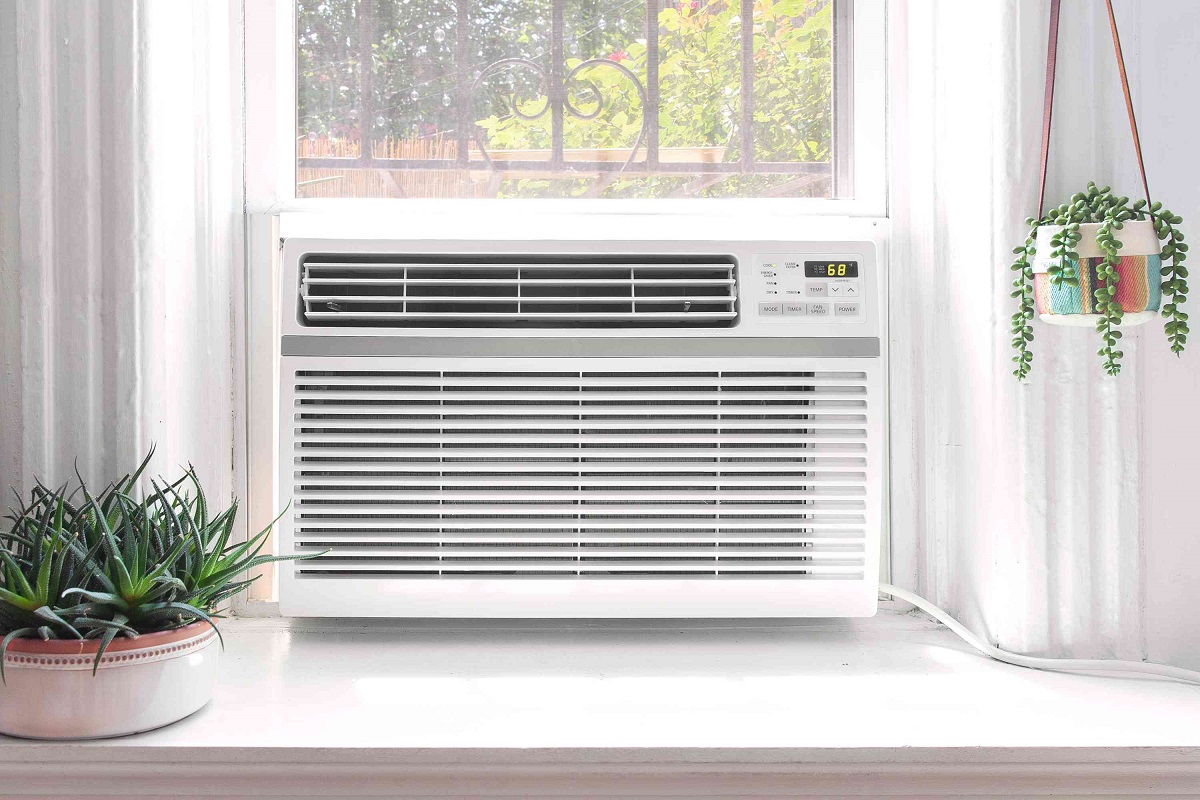
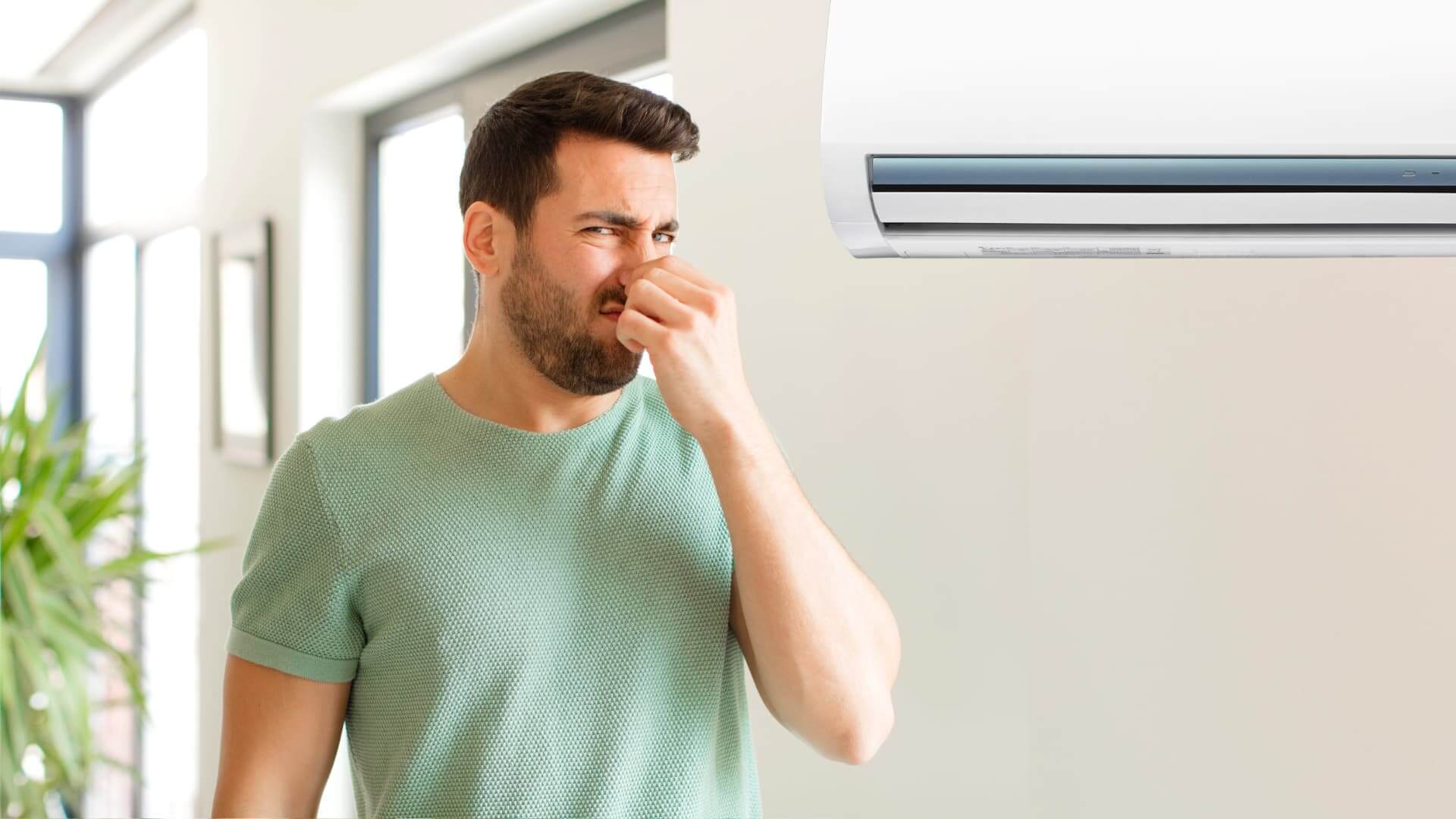
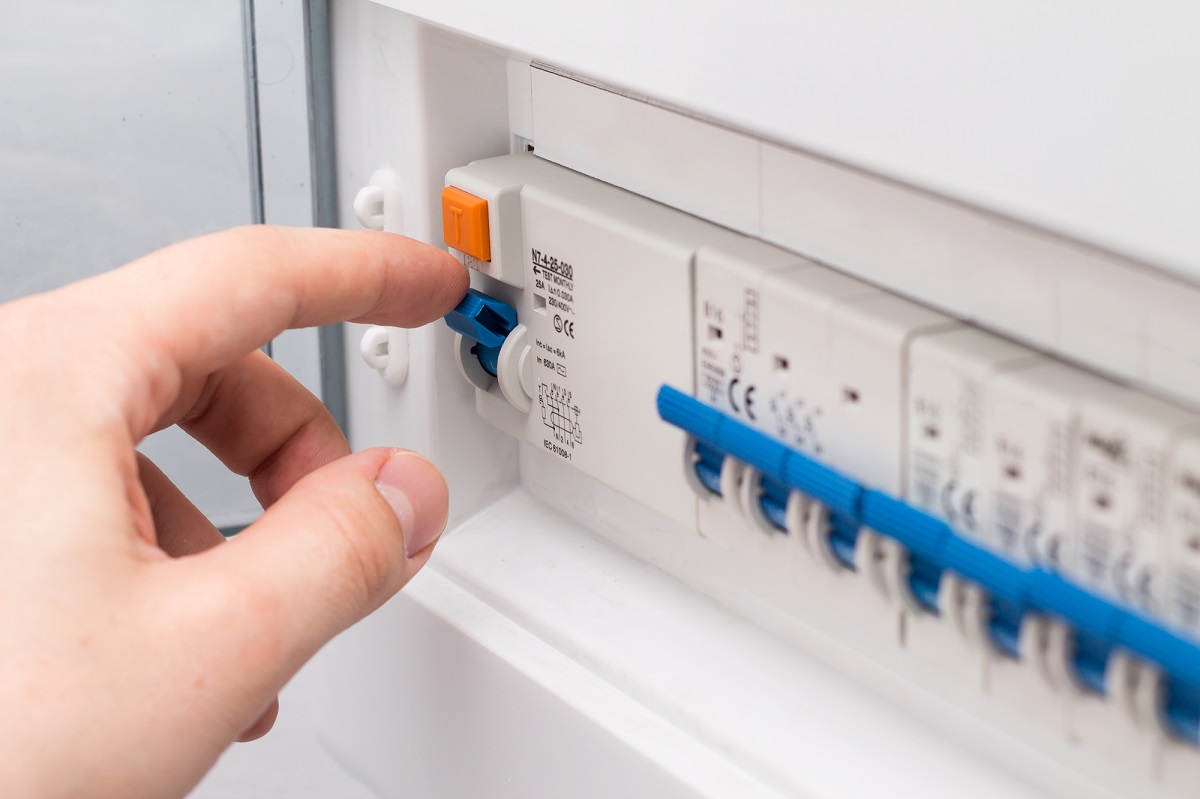
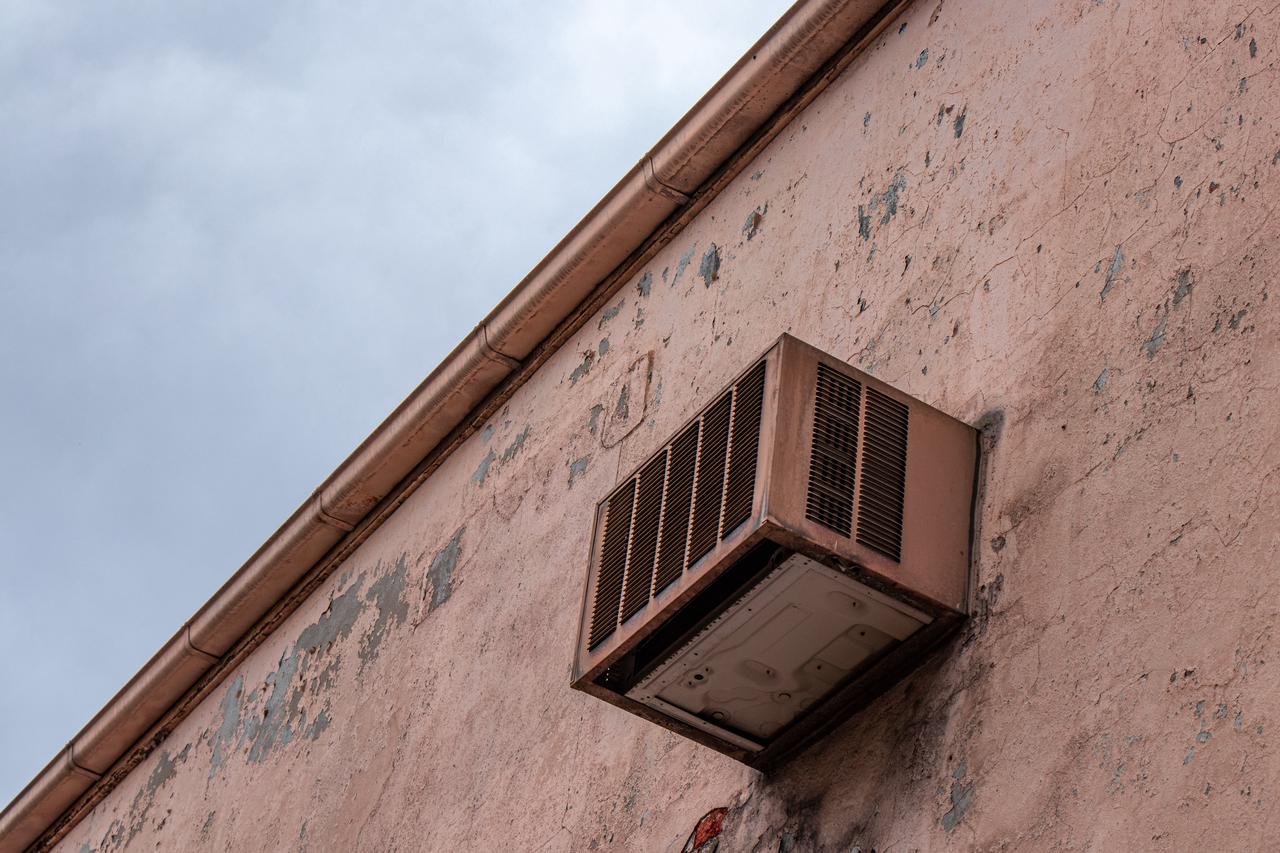
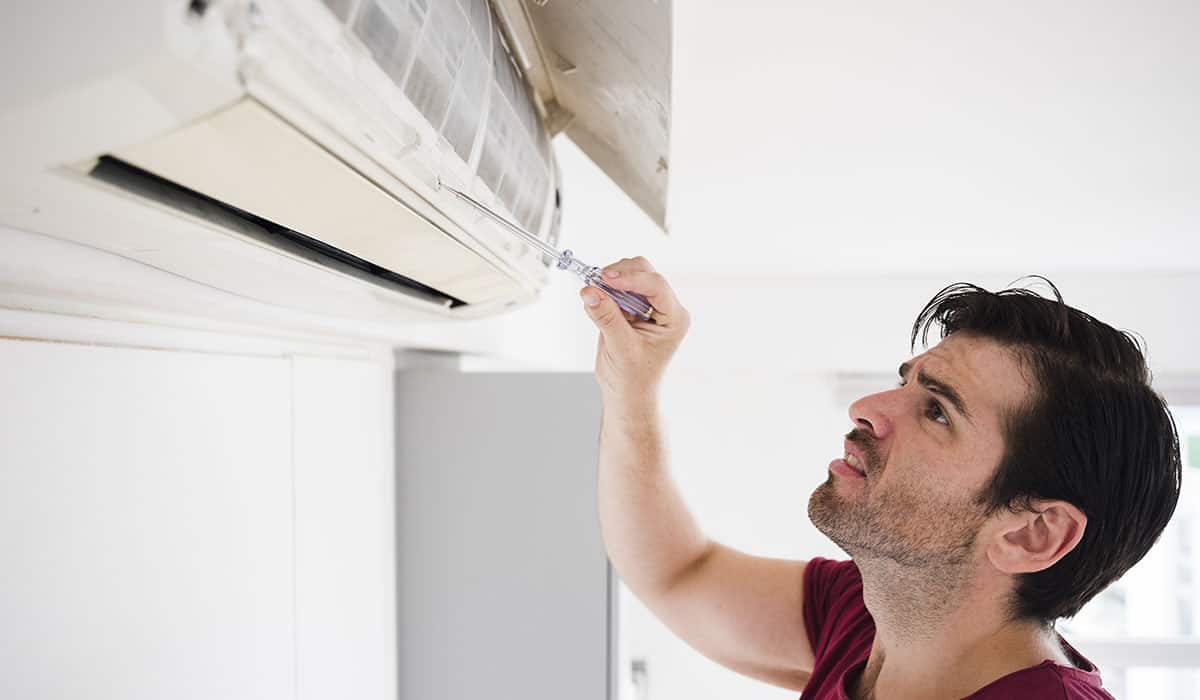

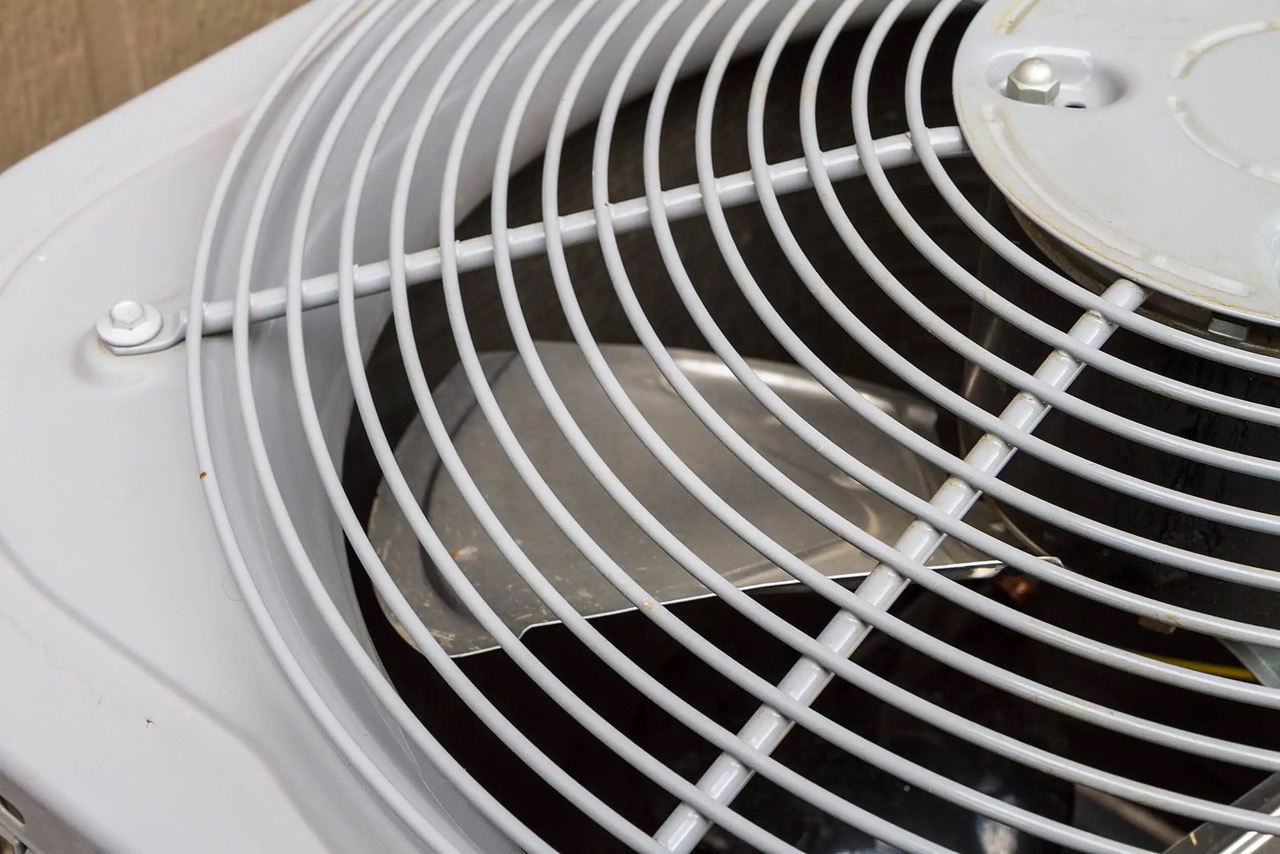

0 thoughts on “Why Is My AC Unit Fan Not Spinning”